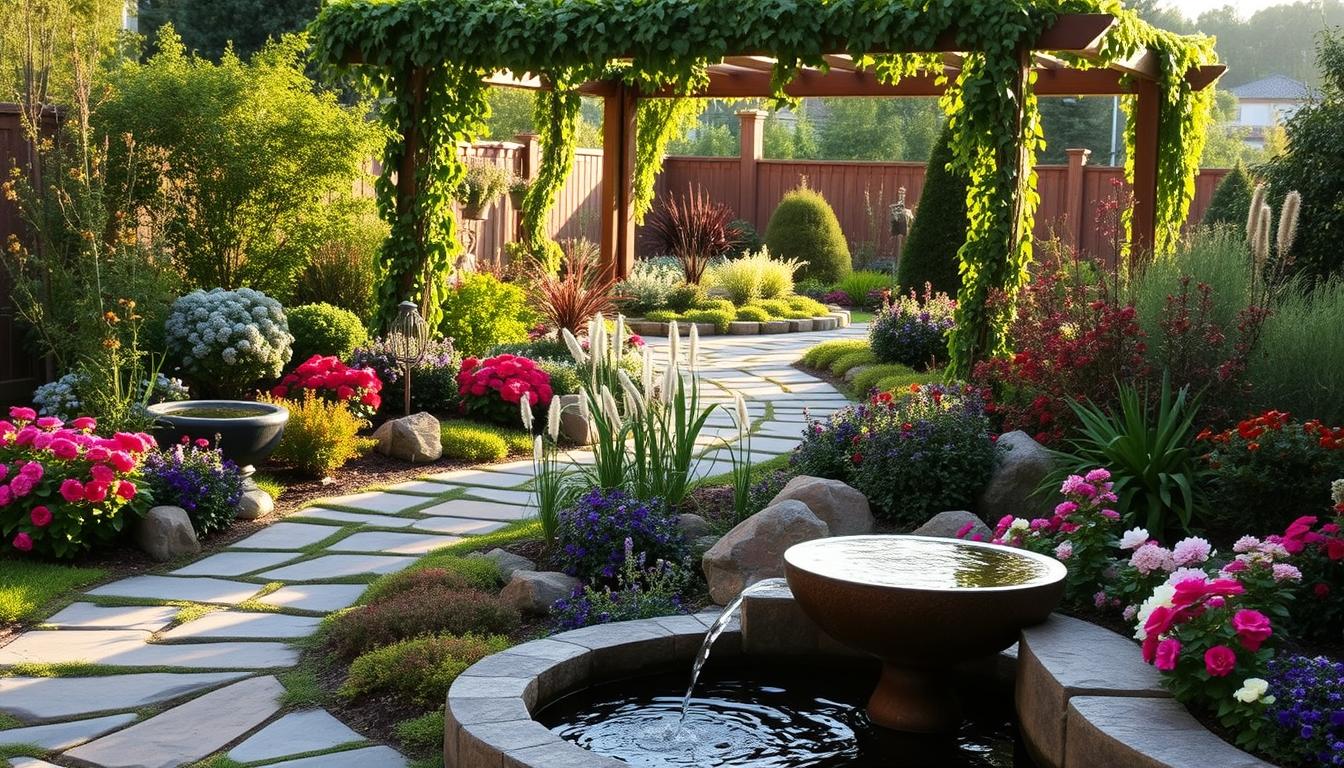The COVID-19 pandemic sparked a renewed interest in outdoor spaces, with many homeowners looking to transform their yards into functional and beautiful extensions of their homes. According to a Rooted Garden case study, the demand for creative landscaping solutions soared during this time.
From classic layouts to modern entertainment features, there are countless ways to enhance your outdoor area. Jill’s quarantine-era project for client Debra, which included designing four distinct spaces, serves as a perfect example of how creativity can turn any backyard into a multi-functional haven.
Today, these areas are more than just places to relax. They’re spaces for growing food, hosting gatherings, and enjoying nature. Whether you’re looking to create a cozy retreat or an entertainment hub, these 11 ideas will inspire you to reimagine your outdoor space.
Key Takeaways
- The COVID-19 pandemic increased interest in outdoor design and landscaping.
- Outdoor spaces now serve multiple purposes, from relaxation to food production.
- Classic and modern features can transform any backyard into a functional area.
- Real-life examples, like Jill’s project for Debra, offer inspiration for homeowners.
- Creative solutions can turn ordinary yards into beautiful extensions of your home.
Introduction to Garden Remodeling
Modern homeowners are redefining their yards with thoughtful design and functionality. Today, a garden is more than just a place to plant flowers—it’s a carefully planned extension of your home.
Gone are the days of basic lawns. Now, outdoor spaces are divided into intentional zones for dining, relaxing, and entertaining. This shift reflects a broader trend toward valuing nature and creating multi-functional areas.
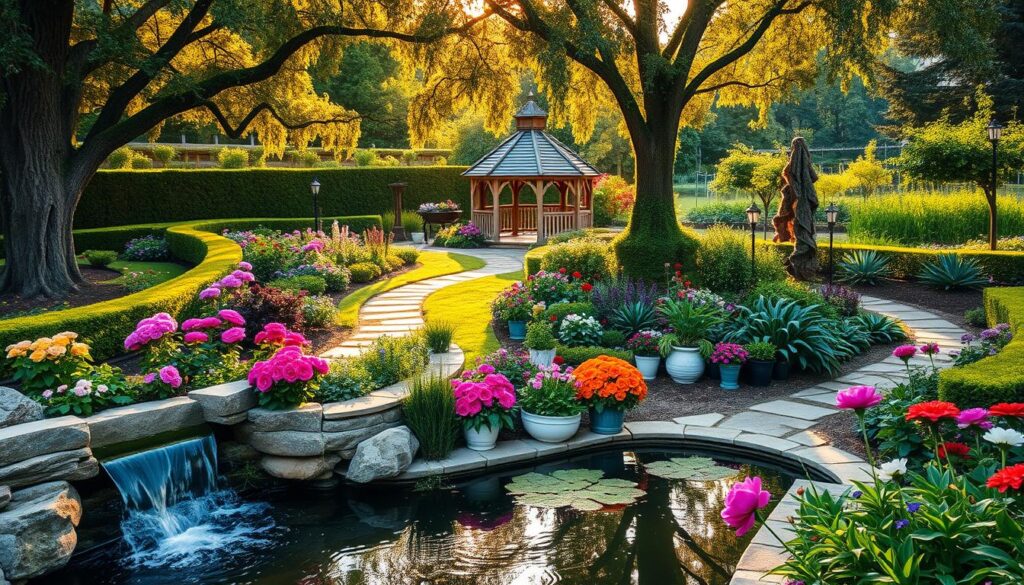
Scott Zimmer of Zimmer Gardens highlights the importance of clean lines in modern landscaping. His metal edging technique ensures crisp borders, giving any yard a polished look.
Post-pandemic, there’s been a societal shift toward connecting with nature. Homeowners are investing in outdoor spaces that combine aesthetics with practicality. For example, pea gravel pathways are both stylish and easy to maintain.
Whether you’re starting a new project or updating an existing space, intentional design can transform your yard into a functional and beautiful retreat.
Why Garden Remodeling is Essential for Homeowners
Investing in your backyard can bring both practical and emotional benefits to your lifestyle. A well-designed outdoor space not only enhances your home’s aesthetic but also adds significant value to it. According to landscape industry reports, a thoughtfully remodeled garden can increase property value by up to 20%.
Beyond financial gains, outdoor areas can serve as functional extensions of your indoor living spaces. Features like outdoor kitchens or dining areas create seamless transitions between inside and outside. These additions make your home more versatile and enjoyable for daily use.

Nature immersion is another key benefit. Rooted Garden’s philosophy emphasizes how spending time in a well-designed outdoor space can improve mental health. The calming effects of greenery and fresh air contribute to a more balanced lifestyle.
Practical needs are also addressed through remodeling. For example, slopes prone to erosion can be stabilized with strategic landscaping. This ensures your garden remains both beautiful and functional over time.
Take Debra’s transformed side yard as a case study. Her 15-foot four-garden layout showcases how creativity can turn underutilized areas into stunning, multi-purpose spaces. This project highlights the potential of thoughtful design to elevate any outdoor area.
Top Garden Remodeling Ideas to Transform Your Space
Transforming your outdoor area into a functional and stylish retreat is easier than you think. With the right design and creativity, you can turn any space into a multi-purpose haven. Below are 11 innovative ideas to inspire your next project.

1. Create a Classic Four-Garden Layout
Ideal for larger areas, this layout divides your backyard into four distinct zones. Rotational planting ensures year-round beauty and functionality. Debra’s 15-foot layout is a perfect example of this approach.
2. Incorporate Linear Elements
Scott Zimmer’s keystone pathways with crisp metal borders add clean lines to any landscaping project. These elements create a polished look while preventing grass encroachment.
3. Design an Illusion of Overgrowth
Strategic planting with hidden edging gives your space a lush, natural feel. This technique is both beautiful and low-maintenance, perfect for busy homeowners.
4. Build a Backyard Court
Richardson & Associates’ Pro-Cushion surfaces are joint-friendly and durable. Add photometric lighting for evening games, making your backyard a hub for activity.
5. Install a “Natural” Pool
OAD Interiors’ Adirondack-style pools blend seamlessly with the environment. Native plants and water features create a serene retreat.
6. Establish Intentional Zones
Mike Pyle’s brick paver technique divides your patio into functional areas. This approach is perfect for outdoor kitchens or dining spaces.
7. Add a Pool Pavilion
Amber Lewis’ circus-inspired designs transform pool areas into luxurious entertaining spaces. These pavilions add both style and functionality.
8. Update Exteriors with Custom Gates
French & French’s midcentury gate designs elevate curb appeal. These custom features add a unique touch to your home’s exterior.
9. Cultivate a Lavender Field
Wendy Owen’s Sonoma-inspired fields bring a touch of French elegance to your space. Lavender is both beautiful and aromatic, enhancing your outdoor experience.
10. Install Quaint Fencing
Emily Janak’s contrast designs add charm to any backyard. These fences are both functional and visually appealing.
11. Create a Life-Size Chess Board
Ken Fulk’s tiered infinity pool includes a game feature for added fun. This creative addition makes your space both interactive and stylish.
| Idea | Key Feature | Best For |
|---|---|---|
| Four-Garden Layout | Rotational planting zones | Large spaces |
| Linear Elements | Crisp metal borders | Polished look |
| Overgrown Illusion | Strategic planting | Low maintenance |
| Backyard Court | Pro-Cushion surfaces | Active families |
| Natural Pool | Native plants | Serene retreats |
How to Choose the Right Garden Remodeling Ideas for Your Home
Choosing the right features for your outdoor area can make all the difference in creating a space that fits your lifestyle. Start by assessing sun exposure patterns. For example, Debra’s sunny side yard was perfect for a four-garden layout, ensuring each zone received adequate light.
Next, consider maintenance requirements. Faux plant walls might be ideal for busy homeowners, while real lavender fields offer beauty and aroma but need more care. Matching your design to your home’s architectural style is also crucial. Territorial Revival gates complement traditional homes, while Adirondack pools suit rustic settings.
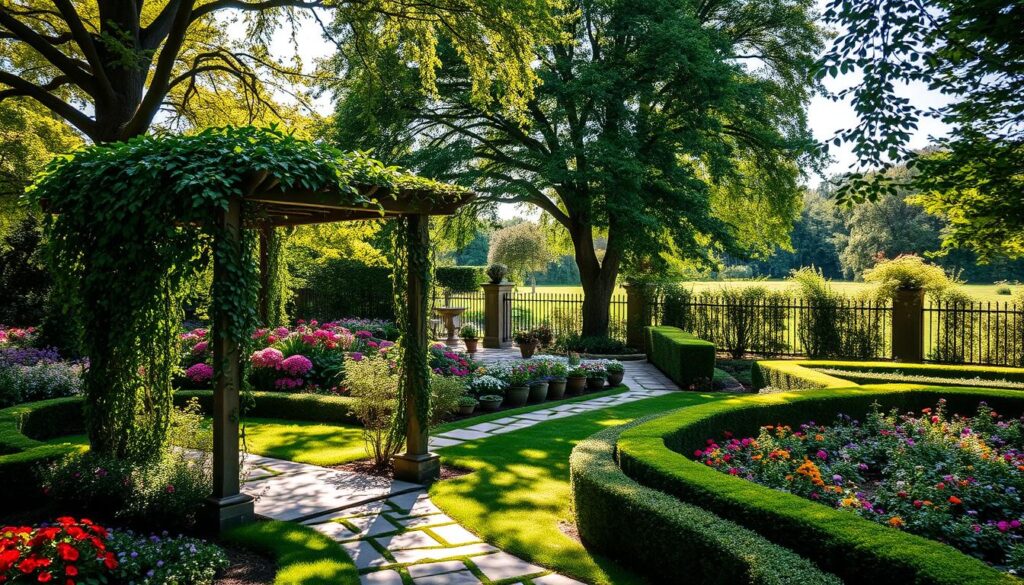
Budget constraints play a key role too. Gravel pathways are cost-effective, while stone solutions add elegance but come at a higher price. Prioritize functionality based on your needs. A sports court is great for active families, while a meditation garden offers a peaceful retreat.
Finally, consider your local climate. Native plants thrive with minimal effort, making them a smart choice for sustainable landscape designs. By evaluating these factors, you can create an outdoor area that’s both beautiful and practical.
| Factor | Consideration | Example |
|---|---|---|
| Sun Exposure | Assess light patterns | Debra’s sunny side yard |
| Maintenance | Choose low or high upkeep | Faux walls vs lavender |
| Architectural Style | Match home design | Territorial Revival gates |
| Budget | Evaluate cost options | Gravel vs stone |
| Functionality | Prioritize use | Sports court vs meditation garden |
For more inspiration on creating your dream outdoor space, visit NewGen Living. Their expert tips can help you bring your vision to life.
Incorporating Eco-Friendly Practices in Garden Remodeling
Eco-friendly practices are reshaping how homeowners approach outdoor spaces, blending sustainability with style. By integrating thoughtful design and environmentally conscious materials, you can create a space that’s both beautiful and kind to the planet.
One effective strategy is using native plants. Terremoto’s Bel Air design showcases a gradient of drought-resistant species like California sages and redbuds. These plants thrive in local climates, requiring less water and maintenance.
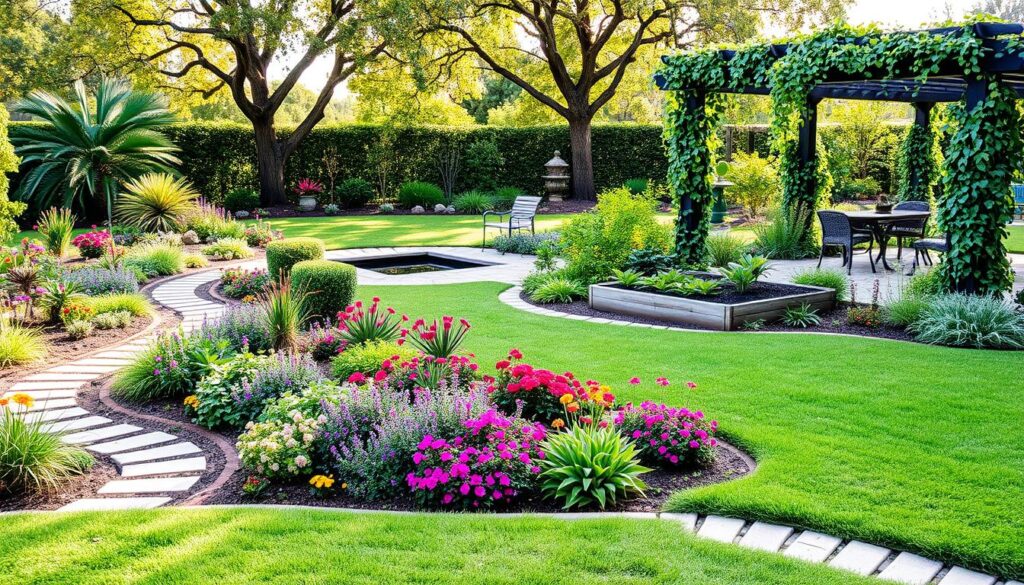
Rain gardens are another smart addition. They reduce runoff by up to 30%, making them ideal for managing stormwater naturally. Pairing these with permeable pavers, like Dan Carlson’s driveway design, ensures proper drainage while adding aesthetic appeal.
Creating wildlife corridors with pollinator-friendly plants is a great way to support local ecosystems. These corridors attract bees, butterflies, and birds, enhancing biodiversity in your outdoor area.
“Sustainability isn’t just a trend—it’s a responsibility. By repurposing materials and choosing eco-conscious designs, we can make a lasting impact.”
Repurposing materials is another eco-friendly approach. Alison Victoria’s faux fir panel wall, made from an antique pier mirror, demonstrates how creativity can turn old items into stunning features. This not only reduces waste but also adds unique character to your space.
Here’s a quick guide to eco-friendly practices:
| Practice | Benefit | Example |
|---|---|---|
| Native Plants | Low water usage | California sages |
| Rain Gardens | Runoff reduction | 30% less runoff |
| Permeable Surfaces | Natural drainage | Dan Carlson’s driveway |
| Wildlife Corridors | Supports biodiversity | Pollinator-friendly plants |
| Repurposed Materials | Reduces waste | Alison Victoria’s wall |
By adopting these practices, you can create an outdoor space that’s not only visually appealing but also environmentally responsible. Whether you’re planting herbs or installing permeable surfaces, every small step contributes to a greener future.
Budgeting for Your Garden Remodeling Project
Planning your outdoor transformation starts with a clear budget to ensure every detail aligns with your vision. Understanding the cost of materials and labor is key to avoiding surprises and staying on track.
Material choices play a big role in your expenses. For example, Pro-Cushion court surfacing is pricier than regular concrete but offers better durability and comfort. Similarly, pea gravel is a budget-friendly option compared to brick pavers, which add elegance but come at a higher cost.
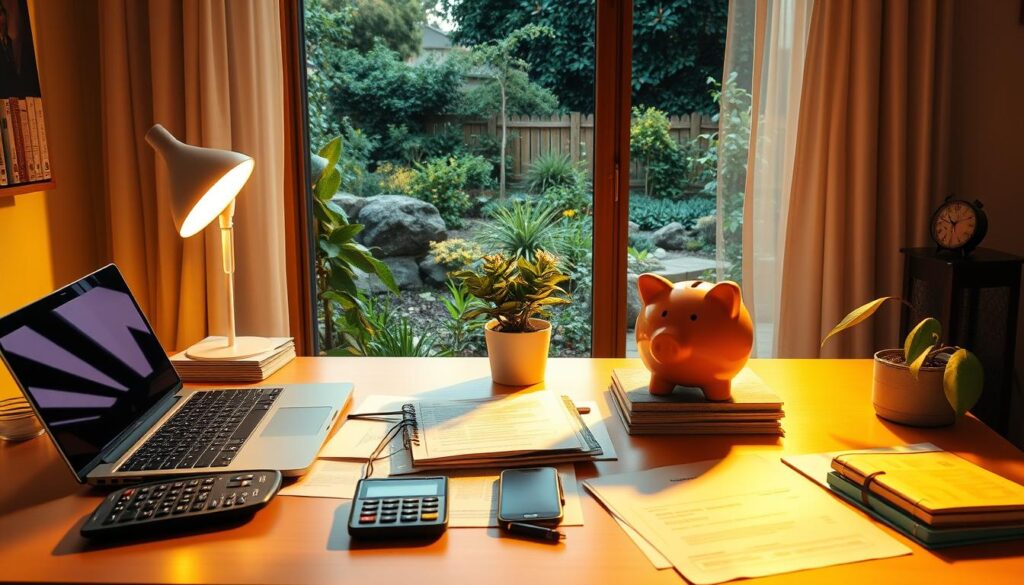
Phasing your project can help manage expenses. Start with focal points like gates or pathways, then expand as your budget allows. This approach ensures steady progress without overwhelming your finances.
Deciding between DIY and professional installation is another important factor. While DIY saves on labor costs, hiring experts ensures quality and efficiency. Consider your skills and the complexity of the project before making a choice.
Long-term savings are possible with smart decisions. Native plants, for instance, require less water and maintenance, reducing ongoing expenses. Don’t forget to account for hidden costs like irrigation systems or lighting, which are essential for functionality.
Here’s a quick cost comparison for popular materials:
| Material | Cost Range (per sq ft) |
|---|---|
| Pro-Cushion Surfacing | $20-$50 |
| Regular Concrete | $5-$10 |
| Pea Gravel | $5-$15 |
| Brick Pavers | $15-$30 |
By carefully planning your budget and prioritizing key features, you can create a stunning outdoor space that fits your financial goals. Whether you’re starting small or going all-in, thoughtful financial planning ensures your project is a success.
Working with Professional Garden Designers
Collaborating with professional designers can elevate your outdoor space to new heights. Their expertise in landscape planning ensures a cohesive look that blends beauty with functionality. Whether you’re starting from scratch or updating an existing area, a detailed plan is essential for achieving your vision.
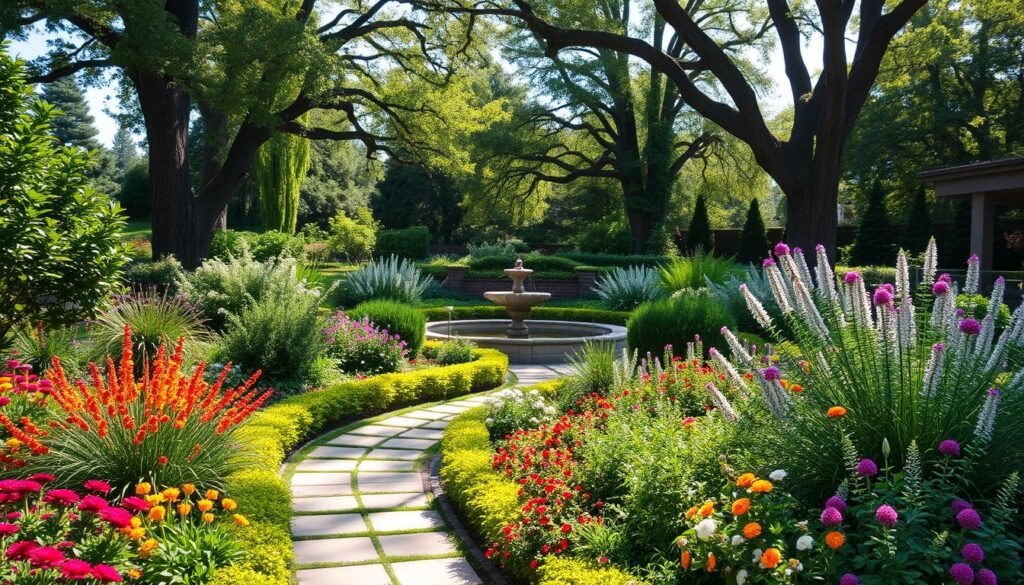
Working with experts like Jill from Rooted Garden offers numerous benefits. Their innovative approaches, such as the kitchen garden philosophy, transform ordinary spaces into multi-functional retreats. An initial consultation helps align your ideas with their expertise, ensuring a personalized result.
When choosing a designer, review their portfolio to ensure their style matches your vision. Ask about their sustainability practices to create an eco-friendly space. Understanding the design process timeline is also crucial for managing expectations and ensuring timely completion.
Professional designers often have access to exclusive plant sourcing networks, offering unique options for your project. This ensures your outdoor area stands out with high-quality, well-suited plants. By leveraging their resources and expertise, you can create a space that’s both stunning and sustainable.
Maintaining Your Remodeled Garden
Keeping your outdoor space in top shape requires regular attention and the right techniques. With a little effort, you can ensure your area remains beautiful and functional throughout the year.
Start with seasonal checklists tailored to your specific setup. For example, Patrick Wade’s boxwood sphere maintenance emphasizes regular trimming to maintain its shape. Similarly, lavender fields need pruning in early spring to encourage healthy growth.
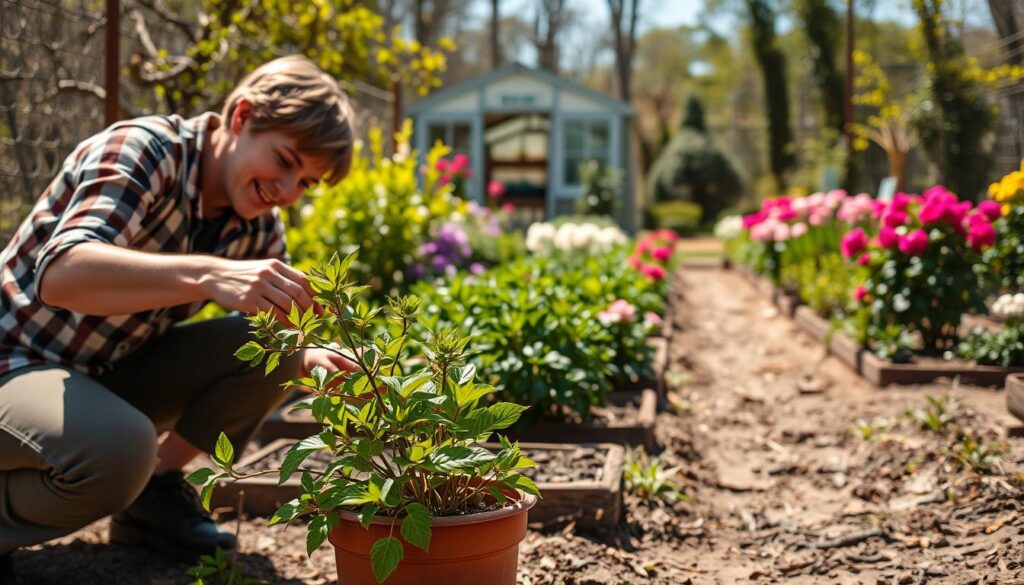
Proper care for your plants ensures they thrive in every season. In colder months, winterize your irrigation system to prevent freezing. This simple step protects your investment and avoids costly repairs.
Refresh pea gravel pathways by raking and adding new layers as needed. This keeps them looking clean and prevents weeds from taking over. For pool pavilions, weatherproofing ensures they withstand harsh conditions while maintaining their charm.
“Regular maintenance is the key to preserving the beauty and functionality of any outdoor space.”
Here’s a quick guide to essential tasks:
- Trim structured greenery like boxwood spheres regularly.
- Prune lavender fields in early spring for optimal growth.
- Winterize irrigation systems to prevent damage.
- Refresh pea gravel pathways to keep them tidy.
- Weatherproof pool pavilions for durability.
By following these steps, you can enjoy a stunning outdoor area that stays in great condition year-round. Whether it’s pruning or refreshing pathways, a little effort goes a long way.
Conclusion
Your outdoor space can become a source of joy and functionality with the right transformation. From four-zone layouts to life-size chess boards, there are endless ways to personalize your garden to fit your style and needs. These updates not only enhance your home’s value but also enrich your daily life.
Start small by focusing on one key feature, like a cozy seating area or a vibrant plant bed. This approach makes the process manageable and rewarding. For a seamless experience, consider consulting a professional designer who can bring your vision to life.
With thoughtful planning and creativity, your outdoor area can become a true extension of your home. Take the first step today and unlock the potential of your garden.

